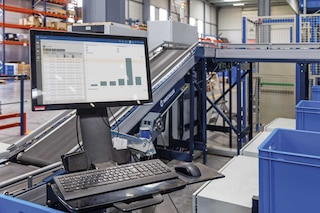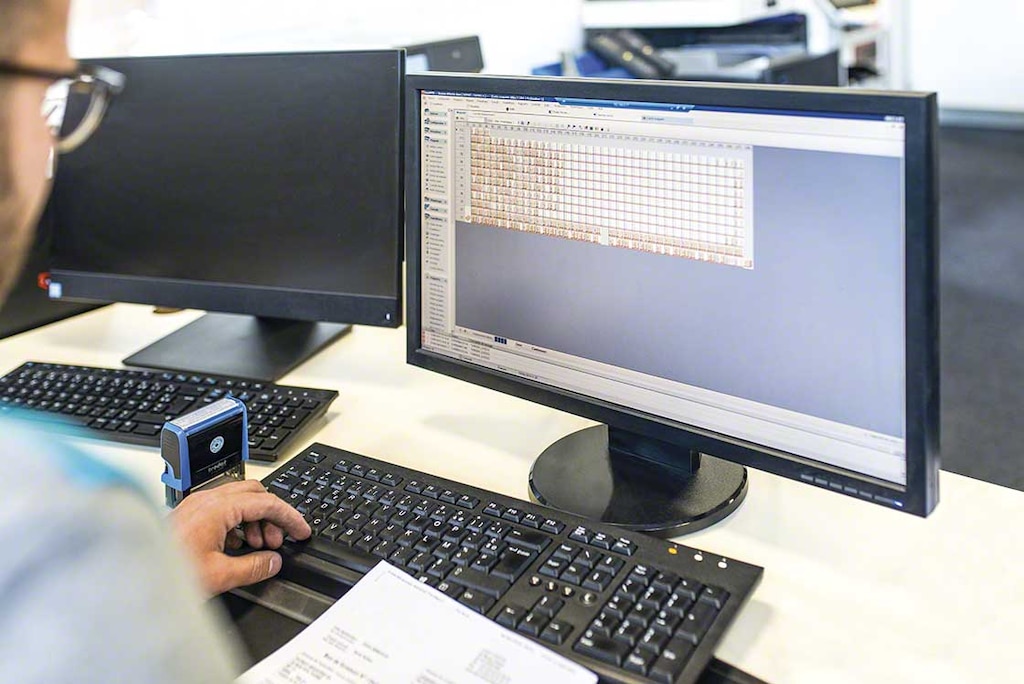
WMS and ERP integration
The time has come. After making a selection of WMS providers, studying the various solutions and calculating the ROI of each one, you’ve found the best warehouse management system, that is, the one that’s a perfect fit for your installation’s logistics processes. However, there’s still one hurdle to overcome: the integration of the WMS with your ERP (Enterprise Resource Planning) system.
Warehouse management systems don’t operate in a vacuum; they coexist in the same ecosystem as the rest of the business management tools. For everything to work together harmoniously, it’s necessary to connect the WMS with the ERP, a process that could raise doubts on a technical level. Rest assured — we’ll clear them all up in our article.
Information flows between a WMS and an ERP
Before getting down to business, let’s provide some context. When we talk about integrating ERP systems and WMSs we’re taking as a given that they’re different software applications: they work in sync, but they don’t use the same platform, nor are they designed to fulfil the same function. Therefore, the WMS isn’t a mere ERP module, but rather software developed specifically for managing warehousing operations and that includes much more advanced functionalities.
The ERP and WMS share information continuously, and, depending on the type of data and processes, the role of each system changes (the well-known master/slave IT model). Hence, a data stream is established in both directions:
- The ERP system creates and maintains the master databases: it releases new products, adds suppliers and sends purchase orders to the installation, in addition to generating invoices. For these types of tasks, the ERP has power over the WMS.
- But there’s also a transfer of information from the WMS to the ERP when, for example, goods are received at the warehouse or orders are dispatched. In these cases, it’s the WMS that notifies the ERP and updates the inventory data, thus, performing the role of master.
It’s extremely important to control this data exchange to prevent errors from being made and information from being duplicated. This is generally achieved through the assignment of different statuses (pending, processing, prepared, loaded, dispatched, etc.). These labels indicate to both systems which actions can and can’t be carried out, as per the rules defined. For example, the WMS can’t load orders that haven't been marked as “invoiced” by the ERP.
On the other hand, the level of detail of the information used by each system also varies. For ERP users, it’s probably enough to know what products are available and in what quantity on a daily basis. The WMS database, however, needs to store much more concrete information, such as the location of each SKU, the type of container it’s in (pallet, box, loose units) and scheduled dispatch times.

What information is needed to integrate the WMS?
Normally, companies already have standardised procedures that are reflected in the ERP. As a result, the WMS has to adapt to that working methodology. Nevertheless, for the implementation of the WMS to be successful, it’s crucial to provide the software provider with the following:
- The article master and its logistics profiles: the article master includes the complete list of released products and a log of all the SKUs that the company has worked with at some point. The logistics profiles assigned to each one indicate key parameters for the management of these goods, such as size, color, expiry date, production batch (essential in pharma logistics) and hazard level, among others.
- Order data: the ERP sends customer orders to the WMS, which must know the type of information linked to each of them. For example, both systems operate using the same order fields (name, address, etc.) and use unique codes to identify them. So, if there’s a mistake, and the customer needs to make a change to an order once it’s been processed, the ERP executes the modification; it is then sent directly to the WMS using the fields and unique code they share.
- Goods receipt information: the ERP sends the schedule of goods receipts to the installation, according to information provided by suppliers. This is of the utmost importance for the organisation of the daily warehouse tasks, so the WMS has to be tailored to process these data correctly.
- Events that trigger notifications: some are already configured in the WMS by default, but the system can be personalised and adapted to other ERP requirements. For example, when there’s a stockout for a particular SKU, the WMS sends an alert to the ERP.
Options for connecting the WMS with the ERP
On a technical level, there are various ways to carry out the data exchange between the ERP and WMS. Let’s take Easy WMS as a reference to explain the standard integration options:
- File by file (XML or EDI)
Since each system uses an independent database, one way to exchange information is through data files. In this way, the ERP issues messages that are read by the WMS and vice versa. For both systems to communicate with each other, these files are in standardised formats, such as EDI (electronic data interchange) and the more modern and flexible XML (Extensible Markup Language).
The data exchange can be done directly between the ERP and the WMS, although there are also some ERPs that use APIs (application programming interfaces) to allow other software applications to communicate with them in a more agile way.
- Exchange databases
This option calls for the use of an intermediate database shared by both systems. Both the ERP and the WMS update this database continuously, dumping new data into it. In addition, each software application performs periodic sweeps to check whether there are messages to process; if there are, it incorporates this new information into its own database.
- Web services
In this case, the exchange of information between the ERP and WMS is done through a web interface, so, both systems need to have internet access to be able to operate with it. This means that the software programs call a database in the cloud via HTTP protocol. The database then returns the information in XML format, which is subsequently incorporated into the system. This option is very common when the integration of the ERP and WMS is customised.
- Specific connectors: SAP and SAP WM
SAP is the ERP with the largest market share on a global level, according to data from Gartner Dataquest. This ERP has its own warehouse management module, but the scope of its functionalities is limited. Therefore, many companies opt to use a more specialised WMS that allows them to organise more complex operations in the warehouse.
In the case of SAP, the connection between this ERP and the WMS needs to be carried out by means of the SAP WM (Warehouse Management) module. To do this, it’s necessary to develop a specific connector that enables a direct channel between the WMS and SAP WM for the information exchange. When it comes to Easy WMS, this form of integration is already standardised and is operational in dozens of companies.
WMS and ERP integration: flexibility is key
According to the ERP Software Market study by Allied Market Research, the global ERP software market is more or less concentrated, with certain companies already established as leaders. Benchmark providers include SAP, Oracle Corporation, Sage Group, Microsoft Corporation and Netsuite Inc.. Nevertheless, there is also a myriad of up-and-coming players entering the market, especially as a result of the widespread use of SaaS solutions compared to traditional on-premise models.
In this sense, the flexibility of a WMS is vital: warehouse management software must be able to connect to all kinds of ERPs, regardless of brand or architecture.
In this article, we’ve gone over the integration methods that we’ve standardised at Mecalux, the result of more than a decade in the WMS sector. Nevertheless, if you’re concerned about optimally synchronising a WMS with your company’s ERP, we encourage you to contact us. One of our software specialists will analyse your case on a technical level and lay out your options, ensuring that the installation of the new software is seamless and effective.
